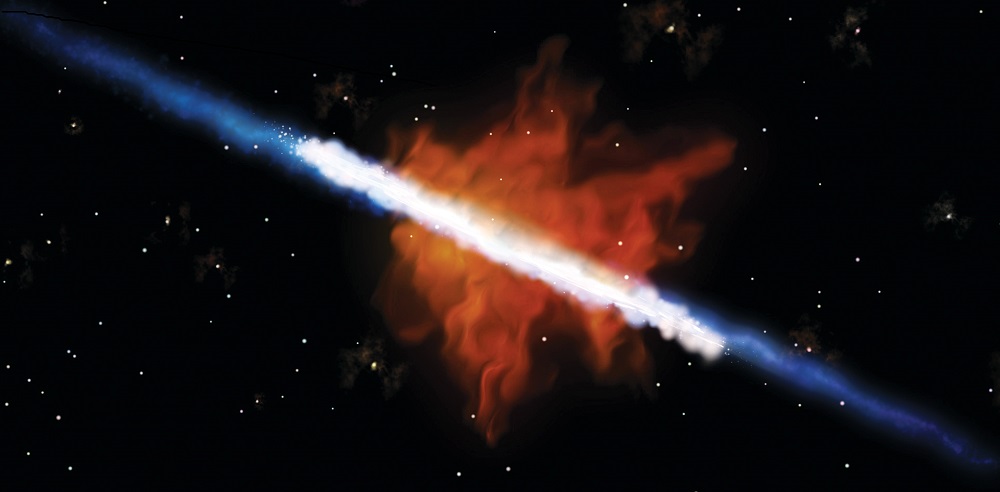Galaxies also produce exhaust gases – huge gas clouds that shoot up and down out of the galactic plane. Now, for the first time, astronomers have succeeded in measuring the composition of galactic exhaust gas. This confirms that the gas flowing is mainly composed of hydrogen and helium, while the outflow is “polluted” by a myriad of heavy elements.
Gas is the raw material from which stars and galaxies are made for their growth Requires. If this view is missing, their star formation will also stop. Conversely, the galaxy also releases gas into its surroundings – material ejected by supernovae, among other things. The balance, accumulation, and outflow of gas are important factors that influence the growth, mass, and size of a galaxy.
But how does the composition of incoming and outgoing galactic gases differ? Until now, astronomers could only guess. Most galaxies are at such a disadvantage in our optical axis that it is difficult to see or distinguish their gas streams.
Galaxy Frisbee Disc
Astronomers have now had their first chance to examine a galaxy’s “exhaust plume” closely with galaxy Mrk 1486, a group of stars about 500 million light-years from the sun that is currently experiencing a period of very rapid star formation. . Unlike most other galaxies, Mrk 1486 turns its narrow side toward us. This enabled astronomers to clearly see the inflows and outflows.
“Think of the galaxy as a Frisbee,” explains lead author Alex Cameron of the University of Oxford. The flowing gas enters the galaxy on the side of the disk and condenses to form new stars. When these stars explode again, they eject new gases out of the galaxy above and below the galaxy. “This ejecta is clearly identifiable in Mrk 1486.
Exhaust gas contains half of the periodic table
As a result, Cameron, co-first author Dean Fisher of Swinburne University in Australia and colleagues were able to observe both types of gas flows in MRk 1486 and determine their composition for the first time. They did this using a high-resolution spectrophotometer on a telescope at the Keck Observatory in Hawaii. “Using what is known as a Keck Cosmic Web Imager, we were able to confirm that the incoming gas consisted of hydrogen and helium,” Fisher says.
But most importantly: the measurement data shows that the gas coming out of the galaxy is actually significantly “dirter” than the flow. So “exhaust gas” consists of a mixture of many heavy elements, including oxygen, carbon and iron. Astronomers have been able to detect the spectral fingerprints of half of the periodic table in this gas, their report says.
This is the first time that the research team has succeeded in examining the exhaust gas flow of a galaxy in more detail. “This is important for astronomy because it also allows us to limit the forces and influencing factors that affect how galaxies produce their stars,” Fisher explains. “It’s one step closer to understanding how and why galaxies look the way they do — and how long they last.” (Astrophysical Journal, 2021; doi: 10.3847/2041-8213/ac18ca)
Quelle: ARC Center of Excellence for All Astrophysics in the 3D Sky (ASTRO 3D)

“Prone to fits of apathy. Zombie ninja. Entrepreneur. Organizer. Evil travel aficionado. Coffee practitioner. Beer lover.”


.jpg)


More Stories
More data protection with this function
Nintendo games via AirPlay on the big screen › ifun.de
Darkest Dungeon II – Things are going to be rough again on consoles this summer